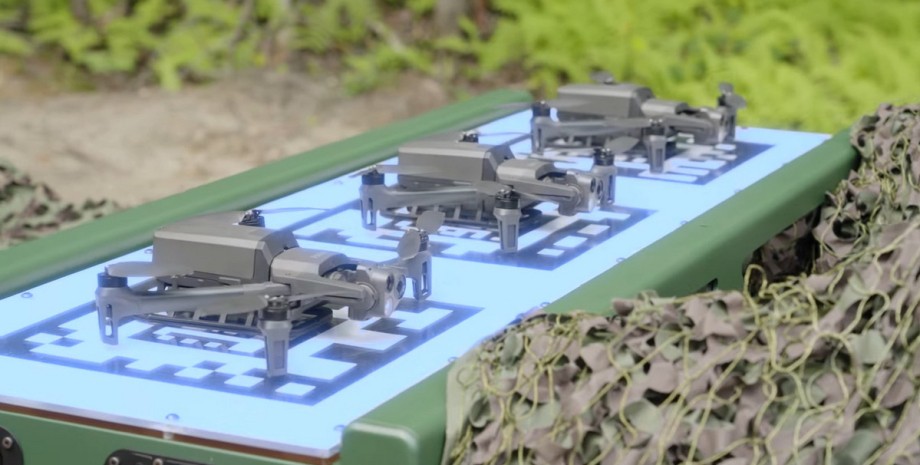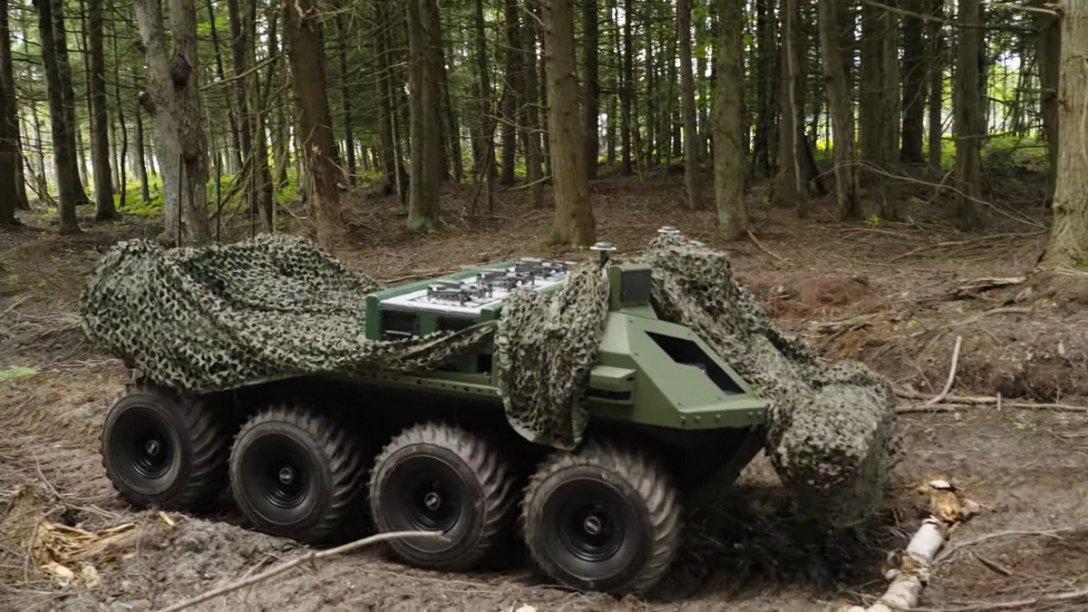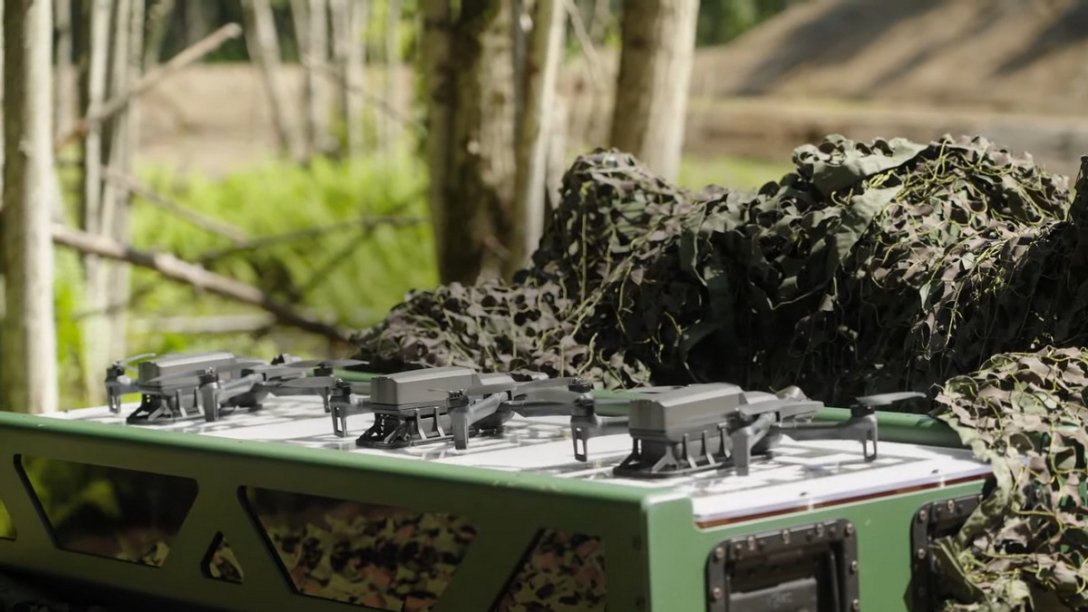
Charging drones in combat: Quaze DSTOW wireless platform presented (video)
The Quaze DSTOW can be installed in any convenient location, even on an armored vehicle, and allows you to recharge the batteries of several drones at once.
Quaze Technologies, a Canadian company that develops wireless chargers, presented a special Quaze DSTOW platform for wireless charging of small drones on the battlefield at the AUSA military conference in the United States. This was reported by the UST portal.
DSTOW stands for Drone Swarm Tactical OverWatch and was introduced as part of the innovative portfolio of military manufacturer Rheinmentall, which installed it as an example on its Mission Master SP unmanned vehicle. The platform allows not only charging drones but also coordinating their actions.

Photo: Screenshot
Moreover, according to the company, Quaze DSTOW is absolutely universal and can recharge the batteries of any model that is equipped with wireless charging. This is very important at the frontline, because a large number of wires interfere with the soldiers.
The versatility of Quaze DSTOW also lies in the way it is used. The platform can be placed directly on the ground and used as a small airfield for drones, or it can be mounted on any transportation platform and launch drones on the move.

Photo: Screenshot
Quaze DSTOW wireless charging technology, based on magnetic resonance, offers a safe, reliable and seamless solution for efficiently charging multiple UAVs, and the potential applications for the military are vast. Quaze has designed and developed its semiconductor volume platform in accordance with the relevant electromagnetic interference (EMI) and electromagnetic compatibility (EMC) standards.
Xavier Bideau, CEO of Quaze Technologies, said: “We have been overwhelmed by the number of military experts who have been impressed with our wireless platform. Together with Rheinmetall, we have already demonstrated one specific charging application by installing it on the Mission Master SP robotic vehicle. However, we are already working on other concepts for our device and will soon present them to the military for evaluation.”

